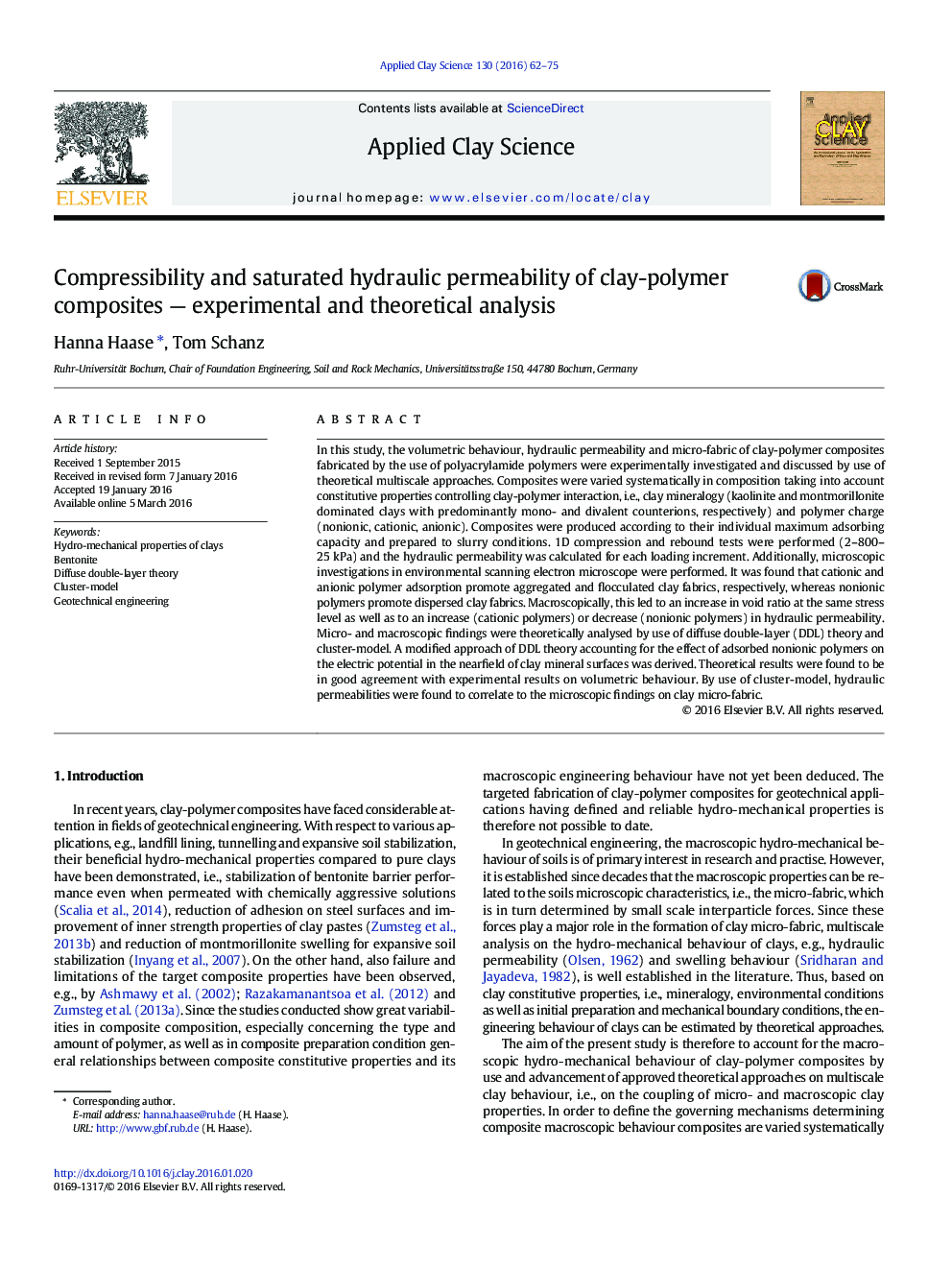| کد مقاله | کد نشریه | سال انتشار | مقاله انگلیسی | نسخه تمام متن |
|---|---|---|---|---|
| 1694012 | 1519056 | 2016 | 14 صفحه PDF | دانلود رایگان |

• Hydro-mechanical properties of clay-polymer composites were related to micro-fabric.
• Theoretical multiscale relationships were found to account for composite behaviour.
• Advanced DDL theory for minerals having adsorbed non-ionic polymers was introduced.
• Cluster-model relates changes in composite micro-fabric to hydraulic permeability.
In this study, the volumetric behaviour, hydraulic permeability and micro-fabric of clay-polymer composites fabricated by the use of polyacrylamide polymers were experimentally investigated and discussed by use of theoretical multiscale approaches. Composites were varied systematically in composition taking into account constitutive properties controlling clay-polymer interaction, i.e., clay mineralogy (kaolinite and montmorillonite dominated clays with predominantly mono- and divalent counterions, respectively) and polymer charge (nonionic, cationic, anionic). Composites were produced according to their individual maximum adsorbing capacity and prepared to slurry conditions. 1D compression and rebound tests were performed (2–800–25 kPa) and the hydraulic permeability was calculated for each loading increment. Additionally, microscopic investigations in environmental scanning electron microscope were performed. It was found that cationic and anionic polymer adsorption promote aggregated and flocculated clay fabrics, respectively, whereas nonionic polymers promote dispersed clay fabrics. Macroscopically, this led to an increase in void ratio at the same stress level as well as to an increase (cationic polymers) or decrease (nonionic polymers) in hydraulic permeability. Micro- and macroscopic findings were theoretically analysed by use of diffuse double-layer (DDL) theory and cluster-model. A modified approach of DDL theory accounting for the effect of adsorbed nonionic polymers on the electric potential in the nearfield of clay mineral surfaces was derived. Theoretical results were found to be in good agreement with experimental results on volumetric behaviour. By use of cluster-model, hydraulic permeabilities were found to correlate to the microscopic findings on clay micro-fabric.
Journal: Applied Clay Science - Volume 130, September 2016, Pages 62–75